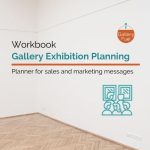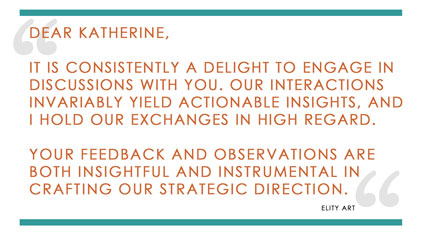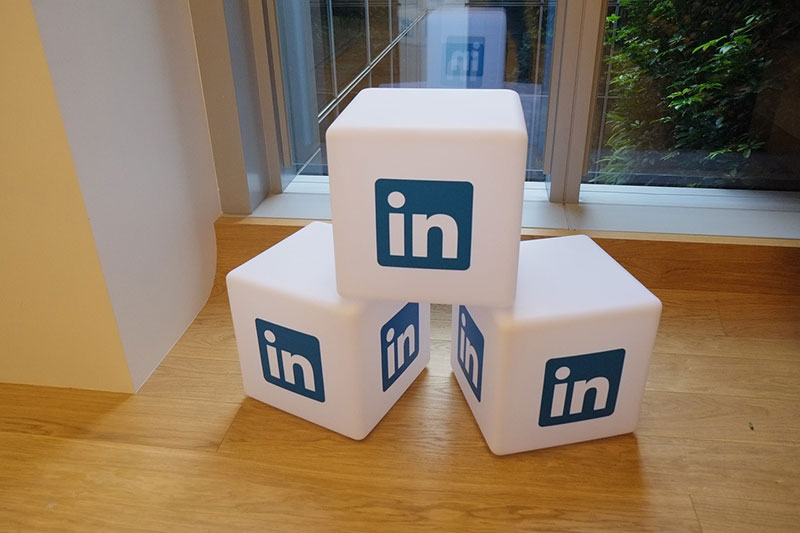Sales and Marketing Fuel for Managing Your Art Gallery Business
Nurture loyal art collectors
Sell more art
Better support your artists
Featured Gallery Management Tool
Art Gallery Exhibition Planning Workbook
 Organizing exhibitions can be stressful, given the high stakes and numerous elements to manage. The Art Gallery Exhibition Planning Workbook is an ideal resource to streamline your shows.
Organizing exhibitions can be stressful, given the high stakes and numerous elements to manage. The Art Gallery Exhibition Planning Workbook is an ideal resource to streamline your shows.
How can Gallery Fuel help with running an art gallery business?
Membership
Get expert advice to grow your gallery business.
Become a Gallery Fuel member to:
- Increase art sales and gallery revenue
- Enhance the value bring to your artists’ careers
- Attract more qualified and loyal gallery collectors
- Operate your gallery business strategically and efficiently
- Receive support from Gallery Fuel to overcome challenges
Join and get the sales, marketing and business fuel you need for your gallery business growth and success.
Advisory Services
Personalized Support
Let’s work together to make your gallery business profitable and sustainable. What impact would these things have on your job and your business?
- Individualized insights and strategies tailored to your art gallery’s specific needs.
- Ongoing support and accountability.
- Increased confidence in your strategic decisions.
- Having an optimized roadmap to take your gallery business from where it is today to where it needs to be for future success.
Learn more about how I can help you and how to get started.
Explore free articles for managing your art gallery business
Gallery Fuel’s goal is to help cultivate the best business skills for art gallerists to support their clients and artists. Focus is on both traditional and digital marketing, sales strategies and gallery management.
Members-Only
Members must login to read full articles, download library tools and take courses.
To be successful, newsletters need to be informative and encourage increased engagement. Some of the most influential gallery newsletters have links to learn more or take action. It is shocking how many newsletters I receive where the only active link is to unsubscribe.
Send surveys a few times a year, covering a variety of topics. The responses can then be used to share a roundup perspective with your email list that can influence how people think about a subject and spark new conversations.
Don`t discount emotional engagement through storytelling. You could craft your stories around an upcoming exhibition or a new artist through a series of emails. Use the email subject line as if it were a book title; each email contains a new chapter. When your readers become more emotionally engaged, they are more likely to take the next step.
Join Gallery Fuel for more tips on sales, marketing, and gallery management.
See the link in bio for more information.
#galleryfuel #artgallery #artbusiness #artdealing #gallerylife #gallerybusiness #artworld #runningagallery #gallerist #artdealer #gallerydirectors #artgallerymanagement #gallerymanagement #artmarket #contemporaryartgallery #womenartdealers #artdealerassociation #artindustry #gallerysector #fineartgallery #artconsultants #artbusinessconsulting
Include an inquiry link on every artist`s portfolio page or for every artwork, depending on the program you use. Make it ridiculously easy for a viewer to contact the gallery.
If you create videos and digital catalogs, post them on your site. I have seen galleries with beautiful videos on YouTube but nowhere on their websites. Why?
Put your newsletter subscription form in your footer or sidebar so it is more visible than strictly on your contact page or on a pop-up that can`t be found after it is closed.
Join Gallery Fuel for more tips on sales, marketing, and gallery management.
See the link in bio for more information.
#galleryfuel
#gallerymanagement
#sellingart
#gallerymarketing
Does the show in the gallery have a specific message? Directly ask your followers their perspective on that theme and how the artist communicated their message.
Include a call to action in the majority of your posts, but do not bait by asking for likes and comments directly.
Start posts with two eye-catching words.
Join Gallery Fuel for more tips on sales, marketing, and gallery management.
See the link in bio for more information.
#artgallerymarketingplan #gallerymarketing #galleryfuel #artgallery #gallerynetwork #artdealer #gallerymanagement #artconsultant #galleryowner #artbusinessconsulting
You can be marketing your new art gallery business on social media platforms simultaneously as you find a physical location, build an artist roster and create a gallery website. Social media is a means of starting to attract and building an audience for your artists.
A customer relationship management (CRM) database is something I recommend investing in at the start. It will provide operational efficiency and help you sell more art.
Opening a new art gallery is often more manageable if you already have a strong network of artists and buyers. Whether you have an existing network or not, building a gallery email marketing list is another top priority.
To rank high search results, you need to pay attention to how you build your website, its content, keywords, and how user-friendly the site is to visitors—things like speed, mobile optimization, and readability matter for SEO.
When establishing a new art gallery, your marketing strategy will focus on inbound marketing tactics. Inbound marketing is all about creating content that attracts your ideal client to you vs. tactics like cold calling or networking where you go to your prospects.

Katherine Hébert
Over the last 25 years, I have worked in fine art galleries and the corporate world. As a result, I have a unique understanding of what it takes to be successful with your sales and marketing efforts in today’s art world. My experience extends from market analysis, competitive intelligence, strategic planning, sales support, design, digital marketing, and advertising.
Through Gallery Fuel, I want to share my knowledge with you and show you how both tried and true and emerging sales and marketing strategies can help with managing your art gallery business for a profitable future.
Subscriber to Gallery Fuel’s weekly newsletter and receive regular information and advice relevant to managing an art gallery. Gallery Fuel Members have access to more in-depth articles on things like fine-tuning your SEO, using Instagram to attract art buyers, implementing a sales or marketing strategy, for example. Members also get full access to archives, and a resource library, with tools to download guides, workbooks and other tools specific to different tasks of running a gallery business.
I also provide strategy sessions if you are struggling with a specific hurdle in your business. I work collaboratively with you to create an action plan that gets you to their goal. Sometimes these are quick sessions that only need a few hours. Other times we schedule multiple sessions over several months. I like to tailor to what is required for the situation. No one size fits all.






